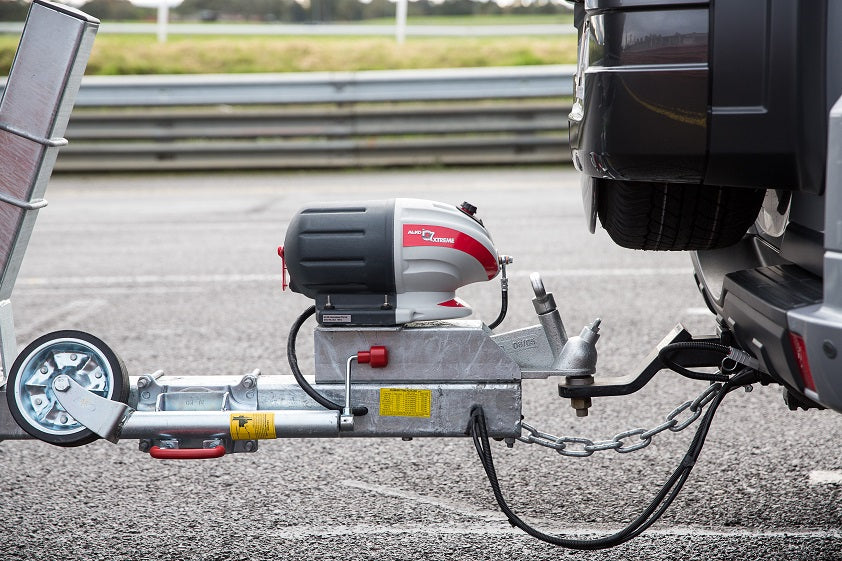
Are you ready to take your new boat for a test run? Make sure your trip to and from the dock can be performed safely and legally. Safe braking practices should be a priority when transporting your vessel.
When you're towing a boat atop a trailer, the gross trailer mass (GTM) - i.e., the weight on the trailer wheels - determines what brakes are legally required. This measurement is taken when the boat is fully loaded, accounting for the motor, online rig, extra fuel, and any gear you may be taking.
Brakes must be operable from the driver's seating position, and the minimum braking system for a trailer depends on the type of trailer, its specific loaded weight and the weight of the vehicle:
0-750 kg
No dedicated brakes are required for towing loaded weight between 0 and 750 kilograms. However, if you have no brakes but your GTM is 751 kg or more, you can be subject to a fine and may lose your insurance cover if you end up in an accident. Load up your boat with everything you can think of, then weight it fully loaded at a public weigh bridge. If you are close to the 751 kg threshold, consider getting dedicated brakes to be on the safe side.
751-2,000 kg
Braking both wheels on at least one axle is required for 751-2,000 kg loaded weight. You can use override mechanical or hydraulic brakes, as well as electric brakes or electric/hydraulic hybrid models. For the latter, you'll need an electric brake controller for functionality.
2,001-4,500 kg
Braking on all wheels is required when loaded weight falls between 2,001 and 4,500 kg. Most people use electric brakes (either electric or electric/hydraulic) when dealing with this weight class.
Controls must be within easy reach of the driver, and you're required to have an automatic breakaway system installed in case the trailer detaches from the vehicle. This fail-safe automatically applies the trailer's brakes if the coupling becomes detached from the towing vehicle. (It must remain energised for at least 15 minutes after being activated.)
4,501 kg and greater
Hydraulic brakes are required by law on any trailers with an ATM exceeding 4,500 kg. They are efficient and reliable, and actuate your trailer's brakes by turning air pressure energy into mechanical force using a compressor installed on the tow vehicle or boat trailer. Ideally, you should have a built-in breakaway system accompanying them.
Electric brake controller setup
An electric brake controller must be set up for trailer brakes to work effectively. Tow your boat to a quiet road and perform the following (with dry brakes):
- Set the controller to approximately the mid-point on the gain dial.
- Accelerate to about 40 kilometres per hour and brake hard.
- If you feel like your tow vehicle is being pushed by the trailer, your controller is set too low. If the trailer wheels lock up, it is set too high.
- Increase or decrease gradually until the braking is smooth and effective.
Aim to adjust hand controllers so the trailer brakes activate just before vehicle brakes do, to help reduce risk of jackknifing and achieve controlled straight-line braking.
Braking habits
When driving, attempt to avoid any sudden braking and turns. Leave plenty of room in front of you, behind you and beside your vehicle and trailer. If you must brake, knowing you correctly set the controller can give you peace of mind.
Brake maintenance
- Salt water is notoriously hard on trailer brakes, so always spray fresh water around the brake caliper to flush it after launch and retrieval.
- If you have disc brakes, check the drums for corrosion frequently and replace them as needed.
- Cable-operated brakes will require regular adjustment.
- Override brake couplings will need to be greased from time to time.
- Hydraulic systems should be flushed at minimum every two years.
If it's time to upgrade your braking system, trailer or other equipment, contact the team at Hunt's Marine. We are happy to help you ensure safety on the road by checking your towing and braking systems and assisting you with choosing the best brakes for your needs.




